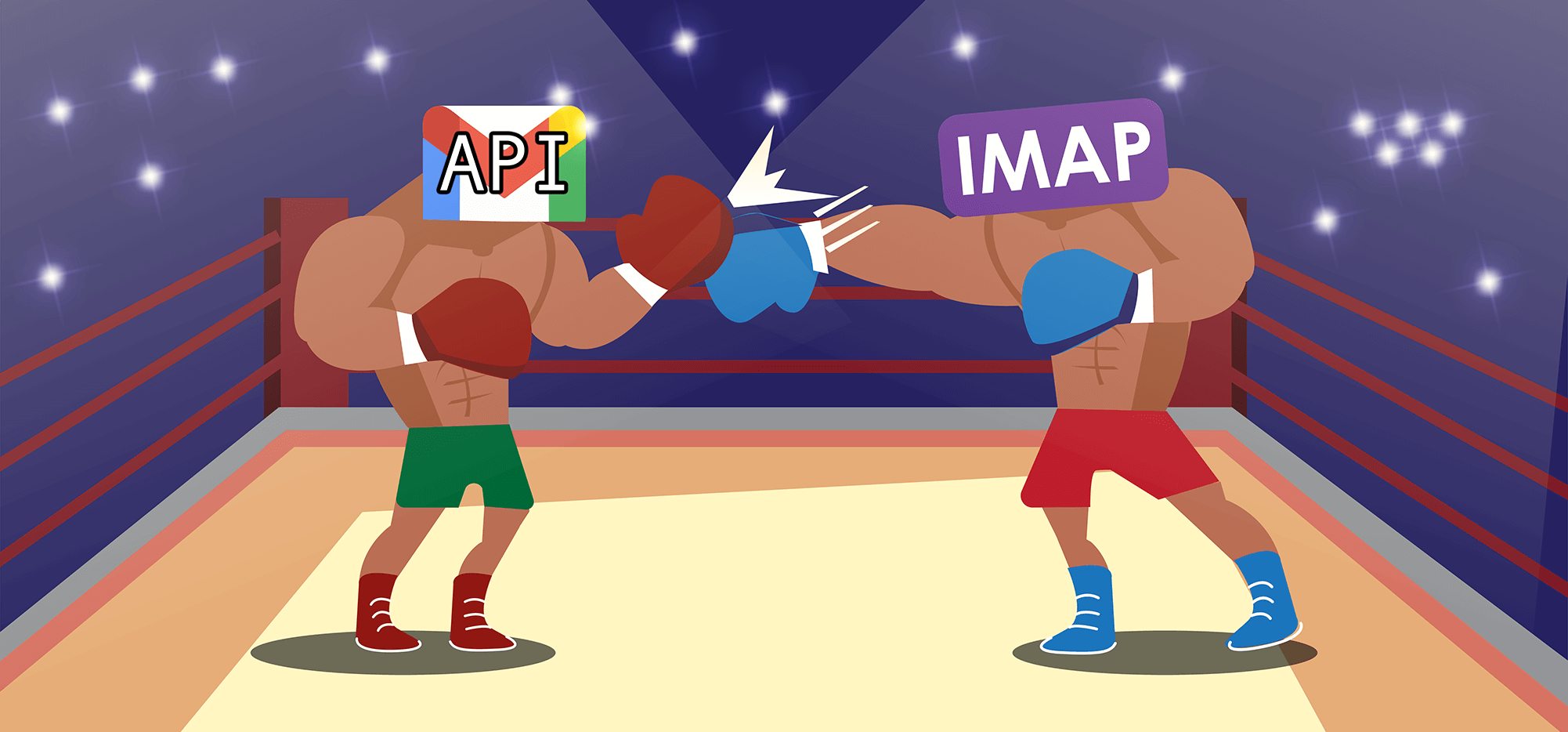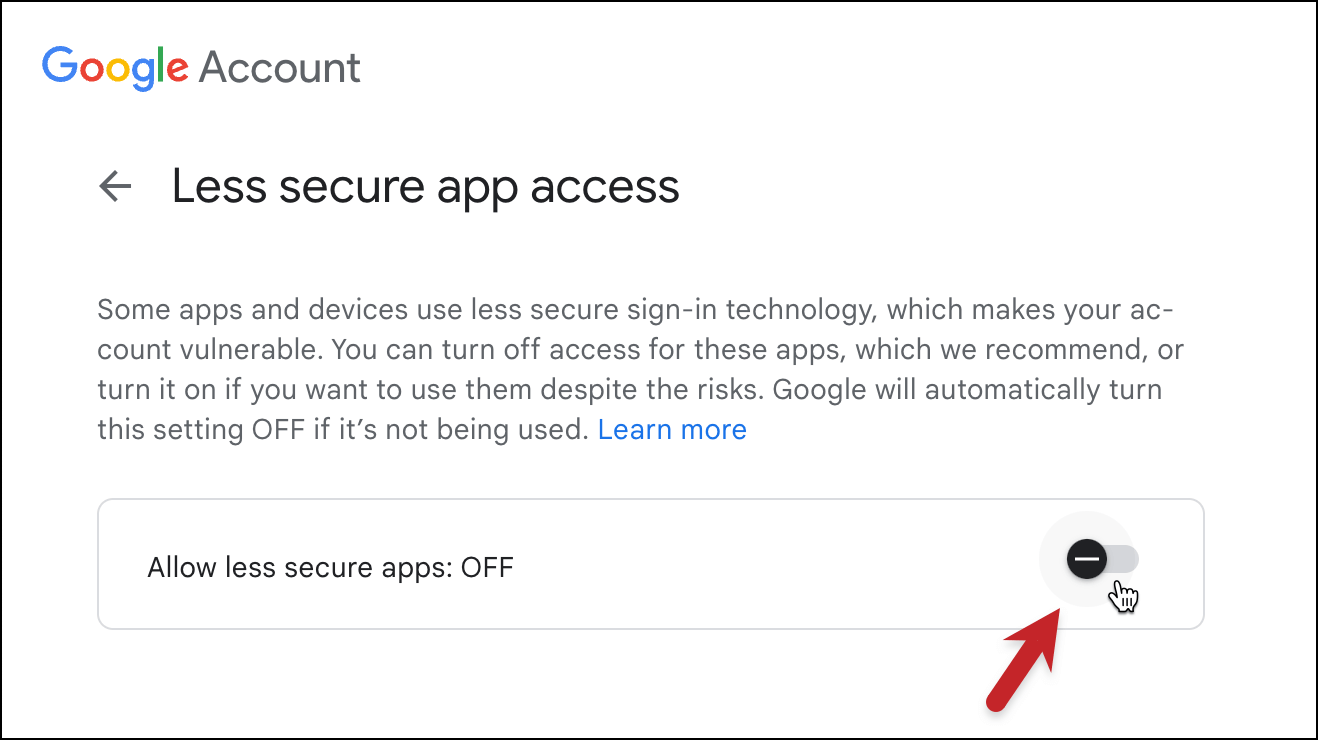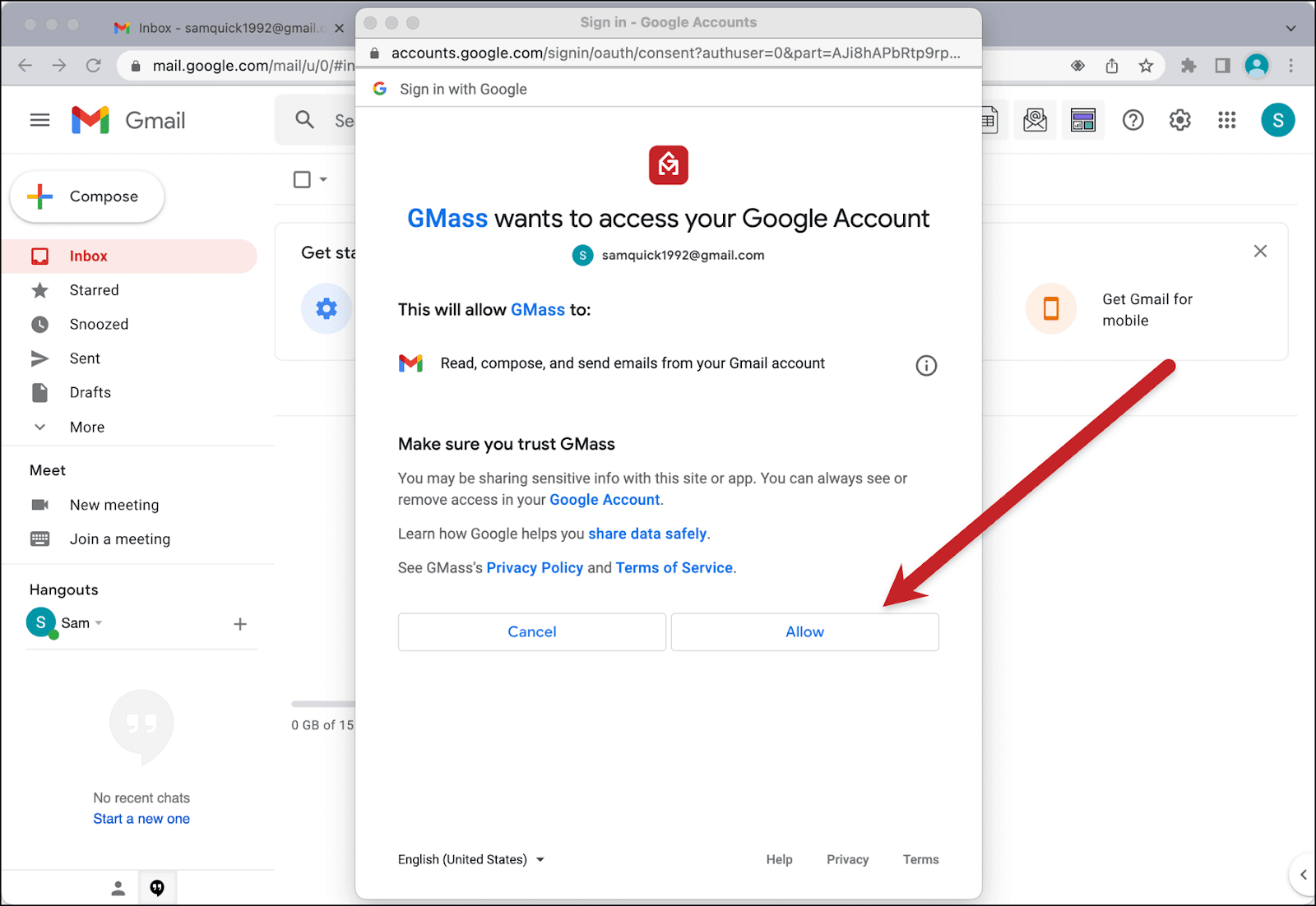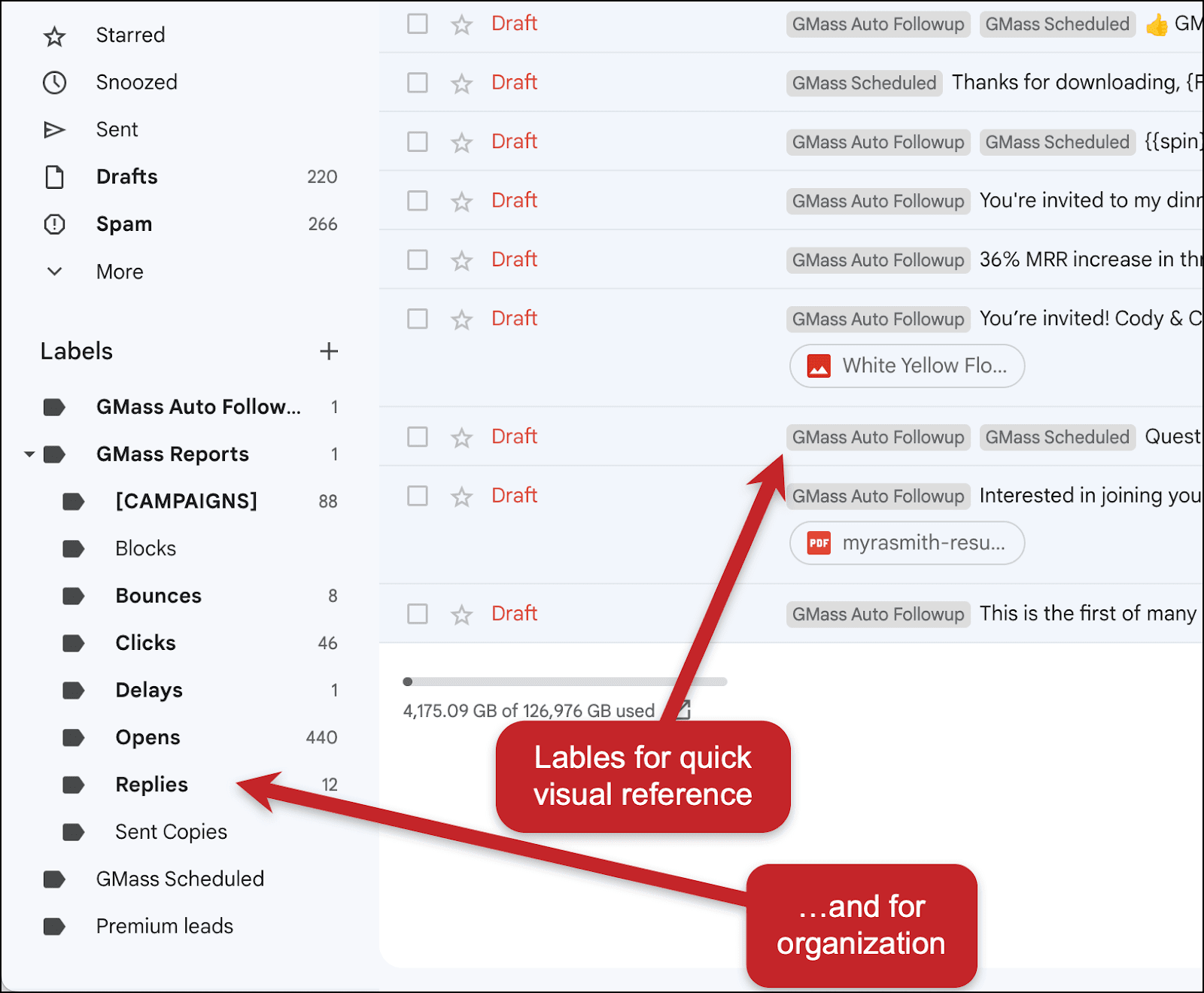
Virtually all cold email platforms send your messages through your email service provider (Gmail, Outlook, and the rest) — but how they send comes down to the Gmail API vs IMAP, the Office 365 API vs IMAP, and so forth.
IMAP (Internet Message Access Protocol) connects to your mail server with the login credentials you provide. It uses various commands to interact with the mail platform and to send your messages by routing them through your platform’s servers.
An API (in the case we’ll discuss here, the Gmail API) has a deep, programmatic integration with your email client. A cold email platform connects to the Gmail API using OAuth authentication (that’s the permission screen you’re used to), which then allows the platform to send emails through your Gmail account.
The API is a more direct way for an email platform to work with Gmail — but IMAP has its advantages as well.
In this article, we’ll cover the advantages and disadvantages of these two methods cold email platforms use to send your emails. We’ll also share which cold email platforms are using which method and why we went with the Gmail API at GMass.
Gmail API vs IMAP: Table of Contents
- IMAP-based Cold Email Platforms: Pros and Cons
- Gmail API-based Cold Email Platforms: Pros and Cons
- Gmail API vs IMAP: Takeaways and Next Steps
IMAP-based Cold Email Platforms: Pros and Cons
There are several cold email platforms using IMAP. Platforms like Instantly and Reply.io use IMAP exclusively; others like Lemlist, Mailshake, Woodpecker, Saleshandy, and Quickmail use IMAP for some platforms and APIs for others.
Advantages of IMAP-based platforms
Here are the biggest pros of an IMAP-based platform.
They can work with any email provider
Platforms that send via IMAP/SMTP can send through any email provider; you just provide your credentials and they can send the email. Some cold emailers have a preference for a provider (like Zoho, for instance) and with IMAP, they can use that provider or a mix of providers on one platform. Here are the instructions, for instance, for Gmail, Outlook, and Zoho.

Less beholden to Google/Microsoft
One big reason the topic of the Gmail API vs IMAP is coming up lately is because of Google’s recent crackdown on email warmup services. (At GMass, we shuttered our warmup program after getting an ultimatum from Google: Shut down warmup or lose Gmail API access.)
IMAP-based senders, who are more platform agnostic, are less (though not completely) susceptible to those types of ultimatums. However, as we’ve said before, Google isn’t dumb — so we predict that IMAP-based systems won’t get an indefinite pass.
Disadvantages of IMAP-based platforms
Here are some of the biggest cons of IMAP-based platforms.
Setup is more difficult and requires dropping some security protections
In order to connect your account to a cold email platform via IMAP it requires a series of steps (versus the one-click OAuth process for an API).
With an IMAP connection, you have to provide your username and password or create an app-specific password. Then you have to input that password into the platform. From there, you have to take the non-ideal step of allowing for “less secure apps” in your security settings.

There’s a lot more here that can go awry. It’s also far more complicated for less technically-inclined users. (In some cases, users may even need to set up their own DKIM, SPF, and DMARC records; that comes up a lot less frequently with Google Workspace accounts.)
More iffy security
IMAP requires allowing “less secure apps” in your account, but that’s not the only security issue.
Any platform with Gmail API access had to pass a Gmail security audit (and those aren’t cheap, by the way) so you can be more confident in who you’re letting into your email account.
There’s no equivalent auditing on IMAP-based platforms.
Slower performance
There’s quite a bit of back-and-forth between an email platform and an email client’s server to send a message via IMAP. (And to do pretty much everything else, too.) The process is slower and less efficient, which can affect the platform’s performance.
Sending from aliases makes you destined for the spam folder
IMAP-based platforms won’t be able to easily access or utilize some of the features at your email provider.
For example, if you send from aliases in your Gmail account (as many cold emailers do), that could be an issue. When an IMAP-based client sends via an alias, it’s more or less “spoofing” your address by changing it in the email’s From field.
Your email isn’t authenticated from that address, meaning you can fail DKIM checks — and head straight to the spam folder. (The team at Mixmax cited this as one of the main reasons they switched from IMAP to the Gmail API.)
When a platform uses an API, the alias is authenticated and passes all the authentication checkpoints.
Gmail API-based Cold Email Platforms: Pros and Cons
Here at GMass, we send emails via the Gmail API. Other cold email platforms using the API method for sending include YAMM, Mixmax, and Mailmeteor.
These are the biggest pros and cons of the API sending method.
Advantages of API-based platforms
Here are the pros of a cold email platform that uses the Gmail API.
Setup takes maybe 10 seconds
When a platform uses the Gmail API, they take on all the complicated stuff and make it easier for you. Connecting your Gmail account to the platform takes two clicks and you’re all set.
There’s little room for anything to go wrong or any need to troubleshoot. There are way fewer steps than connecting via IMAP. It’s just easier.

More functionality and interaction with the platform
A cold email platform using the Gmail API can do pretty much anything that Gmail can do. That’s not the case for IMAP.
For example, a platform using the Gmail API can set labels on messages — a helpful visual indicator and helpful for organization. At GMass, we take full advantage of this. We label emails that are scheduled, have auto follow-ups, are replies, and more.

Another example: By using the API we can pull files from Google Drive for easier file attachments via mail merge.
Better security
As we noted earlier in the IMAP section, platforms that use the API are generally easier to trust. That’s because they’ve had to undergo a Google security audit, which is not easy to pass.
When you grant a cold email platform access to your email, either via IMAP or API, you’re putting a lot of trust into that platform. It’s nice to know Google has vouched for them.
Disadvantages of API-based platforms
We’ve got one main con here, but it’s a big one.
Only works with one platform
If an email platform sends via the Gmail API, that means you have to use it on Google. So if you want to use other platforms, you can’t.
That’s the tradeoff for all the other advantages of connecting via the API versus IMAP.
Gmail API vs IMAP: Takeaways and Next Steps
Cold email platforms generally connect to your email client to send emails (as opposed to most email marketing platforms, which send through their own servers).
And there are two main ways a platform can connect to an email service: Via IMAP, or via that service’s API.
The advantages of IMAP are:
- The platforms can work with any email provider
- They’re less beholden to the tech giants
And the disadvantages are:
- More difficult setup
- Iffy security
- Slower performance
- Difficulty utilizing some email provider features
The advantages of using an API like the Gmail API are:
- Fast, non-technical setup
- More functionality and interaction with the platform
- Better security
And the disadvantage is:
- Only works on one platform
At GMass, we decided from day one to go with the Gmail API to keep things easy, efficient, and feature-rich.
Our goal has always been to make GMass feel like a natural part of the familiar Gmail experience. The Gmail API makes that possible and allows us to seamlessly use everything you know in Gmail (like labels for organization).
If you want to give GMass a try, it’s easy: Download the Chrome extension and then click a few buttons and you’re in. You can join the 300,000+ loyal GMass users by sending up to 50 emails a day to test it out during your free trial until you’re ready to upgrade.
Only GMass packs every email app into one tool — and brings it all into Gmail for you. Better emails. Tons of power. Easy to use.
TRY GMASS FOR FREE
Download Chrome extension - 30 second install!
No credit card required
